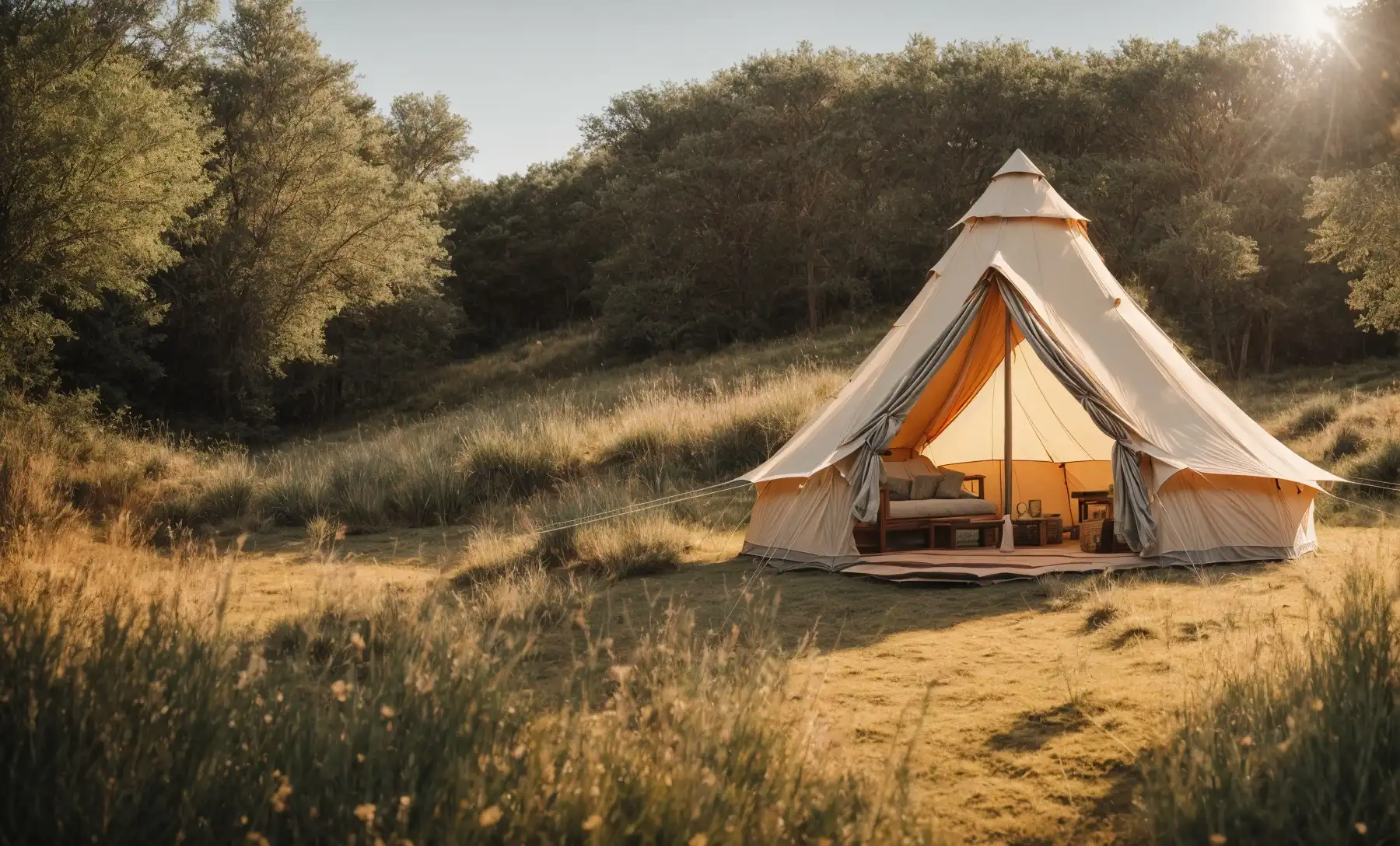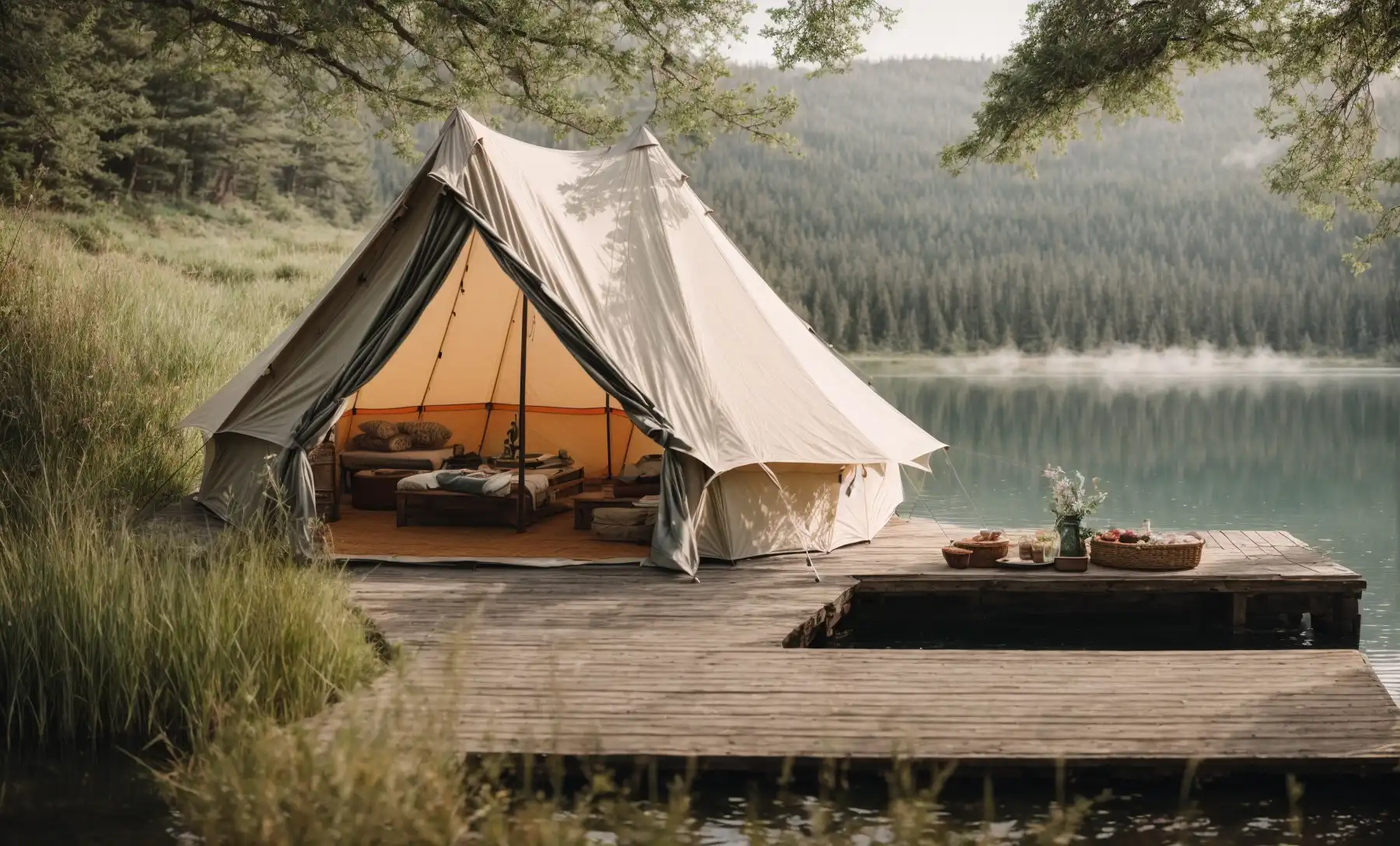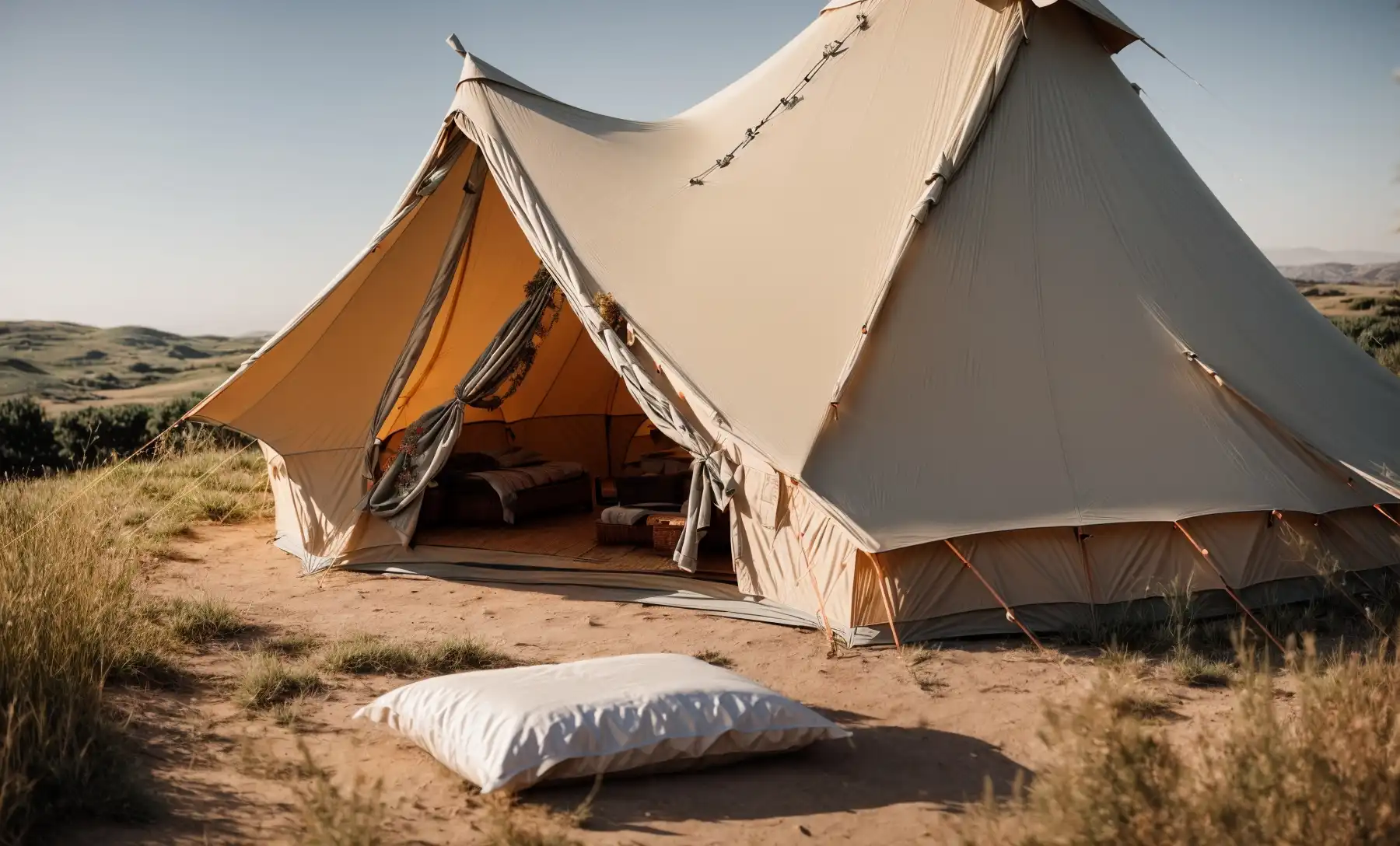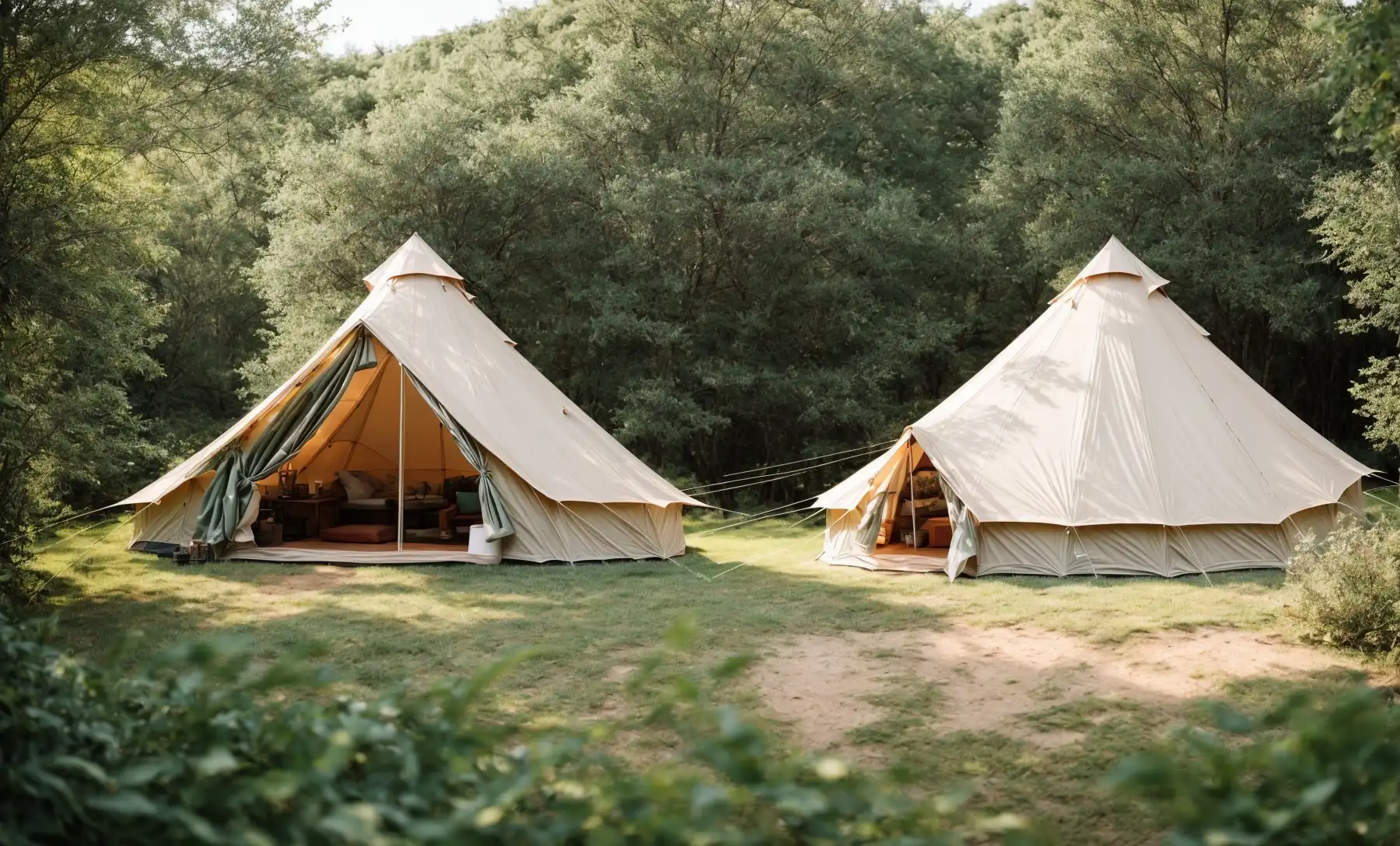Bell tent Vs wall tent? Bell tents offer a classic, conical design perfect for temporary glamping or festivals. Wall tents provide more headroom with vertical walls, catering to long-term camping and hunting trips.
Choosing the right tent can dramatically enhance your outdoor experience. Bell tents, known for their whimsical circular shape, exude a vintage charm that appeals to glampers and festival-goers. Their single-center-pole structure allows for quick setup, which is ideal for those seeking hassle-free camping.
On the other hand, wall tents boast a cabin-style design with straight walls, making them a favorite for outdoor enthusiasts who require extended living space and durability. These tents often include features like stove compatibility and robust weather resistance, perfect for adventurers who face harsh conditions or engage in seasonal activities. It’s essential to consider your specific needs when deciding between the airy elegance of a bell tent and the rugged utility of a wall tent.

About Canvas Camping Tents
Here’s a deep dive into two classic styles: bell tents and wall tents. These timeless shelters offer unique experiences to campers seeking comfort and durability.
Historical Evolution of the Bell and Wall Tent
Bell and wall tents have storied pasts. The bell tent, known for its distinctive shape, has roots in military history. It housed soldiers and now serves as a spacious camping haven. The wall tent, often called the “outfitter tent”, also comes from military heritage. It has become a reliable structure for long-term outdoor use.
Material and Design Overview
Both types feature durable canvas. This material withstands various weather conditions, offering insulation and breathability. Bell tents have a center pole and circular design, allowing easy setup. Wall tents have straight walls and a frame structure, creating a room-like space.
Popularity and Usage Scenarios
Bell tents enjoy popularity among festival-goers and glampers. They provide ample space and a charming aesthetic. Wall tents are a favorite among hunters and backcountry campers. They offer long-term durability and room for gear. Both offer unique camping experiences tailored to different outdoor needs.
Architectural Deep Dive: Bell Tent
Exploring the unique structure of the Bell Tent reveals a blend of tradition and modern camping needs. This classic tent design, popular at festivals and glamping sites, combines elegance with practicality. Let’s dive into what makes the Bell Tent a stand-out choice for many outdoor enthusiasts.

Anatomy of a Bell Tent
- Central Pole: The backbone that supports the canvas.
- A-Frame Door: Creates a sturdy entrance.
- Circular Base: Offers a spacious interior.
- Canvas Material: Built for durability and weather resistance.
- Ventilation Windows: Allows for airflow and minimizes condensation.
- Groundsheet: Usually zipped or sewn to the canvas.
Setting Up a Bell Tent
- Spread out the canvas on the ground.
- Insert the central pole and lift the tent.
- Place the A-frame at the entrance.
- Secure with pegs and tighten the guy ropes.
Advantages of the Bell Tent Design
The Bell Tent boasts features that cater to comfort and simplicity.
- Ample Space: Circular design ensures roominess.
- Quick Setup: Fewer components mean easy assembly.
- Sturdy Structure: Can withstand harsh weather.
- Charming Aesthetic: The vintage look appeals to many.
- Eco-Friendly Options: Some made from organic cotton.
Limitations and Considerations
While the Bell Tent excels in many areas, there are aspects to consider:
- Weight: Can be heavy and less suitable for backpacking.
- Size: Requires a large area for setup.
- Cost: Higher price point than some traditional tents.
- Ventilation: Must manage airflow to prevent dampness.
Structural Analysis: Wall Tent
A thorough understanding of the structural design of wall tents is crucial for campers. Comparing bell tents and wall tents highlights significant differences. The focus now shifts to the robust frame and spacious interior of the wall tent. Let’s delve into the specifics of wall tent structures, including their assembly, benefits, and considerations.

The Wall Tent Structure
The wall tent, known for its rectangular footprint and vertical walls, maximizes usable space. This design employs a sturdy frame, typically made of metal poles or wooden beams, supporting a high-pitched roof. The fabric most often used is canvas, recognized for its durability and breathability.
Erecting a Wall Tent
- Lay out the canvas on the ground.
- Position the frame poles at designated spots.
- Secure the corners and raise the roof.
- Attach the sidewalls and anchor the tent securely.
Setting up a wall tent takes effort and time. Ideally, it’s a two-person job due to the structure’s size and weight. Properly anchoring the tent is critical to ensure stability.
Benefits of Opting for a Wall Tent
- Ample headroom.
- Room for furniture and equipment.
- Long-lasting material withstands elements.
- Customization options for added functionality.
Wall tents serve perfectly for longer stays in nature. Their spaciousness ensures comfort, and their construction is suited for all seasons.
Potential Drawbacks and Precautions
Despite their assets, wall tents come with considerations. Their weight and assembly time may be restrictive for some campers. They require regular maintenance to avoid mildew and wear. It’s essential to follow the manufacturer’s instructions for setup and care to ensure the longevity of the tent.
Side By Side: Bell Tent Vs Wall Tent
Embarking on an outdoor adventure often leads to the key question of shelter. Choosing between a bell tent and a wall tent is a pivotal decision. Each offers distinct benefits suited to different needs. Let’s delve into a side-by-side comparison, assessing factors like space, durability, portability, and value for money.
Space and Comfort Comparative
| Bell Tents | Wall Tents |
|---|---|
| Central pole creates open layout.Circular base maximizes floor space.Suitable for beds, chairs, and tables. | Straight walls allow for more headroom.Rectangular floor plan optimizes organization.Ideal for cots, gear storage, and stoves. |
Durability and Weather Resistance
Bell tents often feature cotton canvas which is durable and breathable. They can withstand moderate conditions but may struggle in heavy snow.
Wall tents are made with heavier-duty materials. They are designed to endure harsh weather, including heavy snow and wind.
Portability and Ease of Transport
- Bell tents weigh less, making them easier to carry.
- Wall tents, with their robust build, are heavier and require more effort to transport.
Price Considerations and Value For Money
- Bell tents are cost-effective but quality varies.
- Wall tents demand a higher investment due to superior durability.
Deciding on the best fit depends on budget and long-term camping needs.
Learn more: Backpacking Tent Vs Camping Tent
Making the Right Choice For Your Outdoor Adventure
Choosing between a bell tent and a wall tent transforms any outdoor trip. These shelters offer unique experiences. Understand the differences to make a choice that enhances your adventure.
Assessing Your Camping Needs
Consider the type of camping you plan. Are you gearing up for a weekend retreat or an extended wilderness stay? Camping duration greatly influences your decision.
- Bell tents suit festival-goers and luxury campers.
- Wall tents fit hunters and backcountry explorers.
Evaluating the Terrain and Climate
Tent performance varies by environment. Bell tents’ rounded shape sheds wind and rain well. Wall tents provide more stability in snowy conditions.
| Environment | Bell Tent Advantages | Wall Tent Advantages |
|---|---|---|
| Forest | Blends with surroundings | Structural resilience |
| Mountainous | Wind resistance | Snow load management |
Personal Preference in Style and Setup
Your preference matters. Bell tents offer simplicity with a single central pole. Wall tents need a frame but have straight walls for more headroom and space.
- Quick setup versus space?
- Charming design or practical shape?
- Ease of transport?
Long-term Investment and Maintenance
Consider longevity and upkeep. Durable materials and proper care extend tent life. Wall tents usually require a greater initial investment but last longer with proper maintenance.
Compare: Cost, Frequency of use, Material quality.
FAQs about Bell Tent Vs Wall Tent
What are the main differences between a bell tent and a wall tent?
Bell tents have a circular base with a conical shape for easier setup and aesthetic appeal, whereas wall tents offer a rectangular design with vertical walls for greater space and durability.
How do I choose between a bell tent and a wall tent based on my camping style?
Choose a bell tent for short-term, casual camping with easy setup, and opt for a wall tent for longer, more rugged trips requiring more space and durability.
Can bell tents and wall tents withstand harsh weather conditions?
Bell tents are suitable for moderate climates, while wall tents are better equipped for extreme weather due to their robust materials and design.
What is the typical price range for high-quality bell tents and wall tents?
High-quality bell tents typically range from $500 to $1,500, whereas wall tents can cost from $800 to over $2,000, depending on size and features.
Are there eco-friendly options available for both types of tents?
Yes, both bell and wall tents have eco-friendly options, with manufacturers increasingly using sustainable materials and environmentally conscious production methods.
Conclusion
Deciding between a bell tent and a wall tent depends on individual needs. Both offer unique benefits for campers valuing space, comfort, and style. Examine your priorities—whether it’s the charm of a bell tent or the robust structure of a wall tent.
Your perfect outdoor companion awaits, tailoring nature’s experience to your taste. Choose wisely, and happy camping! Discover endless adventures with Outdoor Awaits! Dive into our Outdoor Pursuits Comparison for insights and stories that bring the great outdoors to your fingertips.
Sukhen is a passionate blogger and traveler who visited many historical places in Bangladesh, Myanmar, India, and Thailand. He’s an avid camper, so he shares his knowledge of camping and wildlife with his readers. He also helps readers plan their own camping trips. To know more, stay connected with Outdoor Awaits.

